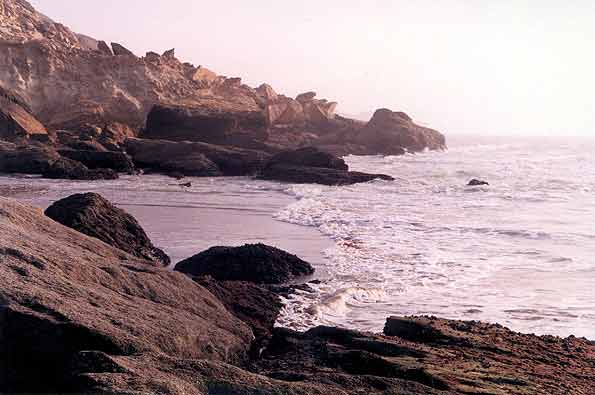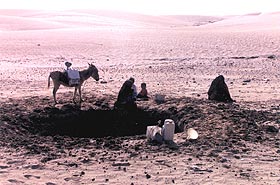


The Makran Coastal Wetlands Complex lies on the Balochistan where rugged conditions and poor communications hamper the efforts of the Balochistan Forests and Wildlife Department and other government agencies to manage natural resources. Protected Areas status been extended to several parts of the Makran Coast, most significantly in the case of Hingol National Park that at 169,000 ha, is Pakistan’s largest National Park. Two sites within the Makran Coastal Wetlands Complex have been recognised by the Ramsar Bureau: Astola Island and Jiwani Coastal Wetlands. Both WWF-P IUCN-P have mounted small-scale initiatives to conserve elements of coastal zone biodiversity on the Makran Coast. WWF-P initiated turtle and mangrove conservation programmes in Jiwani in 1998 and in 2002 negotiated financial support for a mangrove rehabilitation campaign extending westwards along the coast from Sonmiani Bay to Kalmut Khor and Jiwani.
Elements of the Makran Coastal Wetlands Complex support a range of globally important biodiversity. These include significant areas of coral, mangrove swamps and sea grass, threatened marine turtles, the endangered Marsh Crocodile, large seasonal accumulations of migratory birds and approximately ten species of marine cetaceans. Jiwani Sea Mount and the areas of rocky shore-line, estuaries and associated mangroves are vital breeding areas for commercially important fish species.
 The Makran Coastal Wetlands Complex is sparsely populated, for example the population density in Gwadar District is nine people per Square Kilometer. The majority of the population is concentrated around the coastal towns of Jiwani and Gwadar where fishing and other port-based activities are undertaken. Fishing is the principal occupation in the area. This is carried out by both traditional fishermen operating small diesel-powered boats and by deep sea trawlers from the large-scale national and international commercial fishing industry. Harmful fishing practices are rampant, such as the use of illegal nets and fishing during the spawning season. There is also a substantial by-catch of endangered marine species such as turtles and cetaceans. Coastal pollution from leakage of diesel boat fuel and oil further adds to the negative impact on wetlands. Other forms of resource dependence include fuel wood collection from mangroves and hunting for sport and subsistence purposes. A low literacy rate and cultural norms that restrict the social mobility of women hinder the participation of women in National Resource Management regimes. Additionally, weak social indicators for the provision of health, sanitation services and access to drinking water exacerbate poverty and perpetuate dependence on natural resource based livelihoods.
The Makran Coastal Wetlands Complex is sparsely populated, for example the population density in Gwadar District is nine people per Square Kilometer. The majority of the population is concentrated around the coastal towns of Jiwani and Gwadar where fishing and other port-based activities are undertaken. Fishing is the principal occupation in the area. This is carried out by both traditional fishermen operating small diesel-powered boats and by deep sea trawlers from the large-scale national and international commercial fishing industry. Harmful fishing practices are rampant, such as the use of illegal nets and fishing during the spawning season. There is also a substantial by-catch of endangered marine species such as turtles and cetaceans. Coastal pollution from leakage of diesel boat fuel and oil further adds to the negative impact on wetlands. Other forms of resource dependence include fuel wood collection from mangroves and hunting for sport and subsistence purposes. A low literacy rate and cultural norms that restrict the social mobility of women hinder the participation of women in National Resource Management regimes. Additionally, weak social indicators for the provision of health, sanitation services and access to drinking water exacerbate poverty and perpetuate dependence on natural resource based livelihoods.